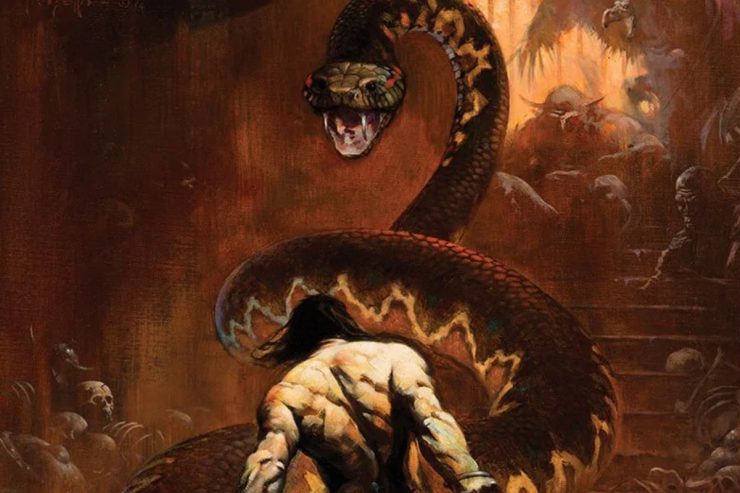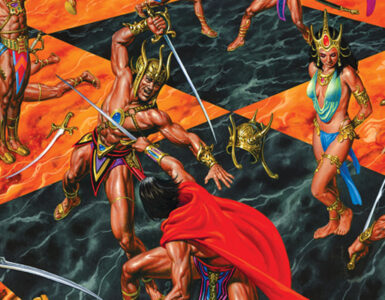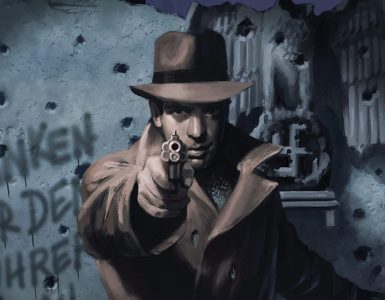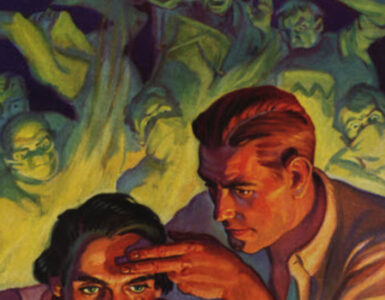“Know, oh prince, that between the years when the oceans drank Atlantis and the gleaming cities, and the years of the rise of the Sons of Aryas, there was an Age undreamed of, when shining kingdoms lay spread across the world like blue mantles beneath the stars . . . Hither came Conan, the Cimmerian, black-haired, sullen-eyed, sword in hand, a thief, a reaver, a slayer, with gigantic melancholies and gigantic mirth, to tread the jeweled thrones of the Earth under his sandalled feet.”
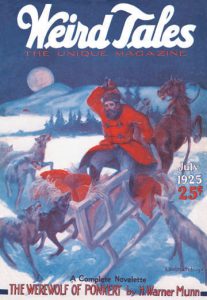 Robert E. Howard was born on January 22, 1906. Growing up in the Southwest, he decided early in life that he wanted to be a writer. He penned his first story at age nine or ten about a young Viking named Boealf.
Robert E. Howard was born on January 22, 1906. Growing up in the Southwest, he decided early in life that he wanted to be a writer. He penned his first story at age nine or ten about a young Viking named Boealf.
Howard made his first sale in 1924. “Spear and Fang” was published in the July 1925 issue of Weird Tales. Another, “In the Forest of Villefère” was published a month later.
Robert E. Howard’s fiction was inspired by the stories he heard as a child — particularly those of his grandmother — his own experiences — especially for his boxing fiction — and his dreams.
I have lived in the Southwest all my life, yet most of my dreams are laid in cold, giant lands of icy wastes and gloomy skies, and of wild, wind-swept fens and wildernesses over which sweep great sea-winds, and which are inhabited by shock-headed savages with light fierce eyes. I am never, in these dreams of ancient times, a civilized man. Always I am the barbarian, the skin-clad, tousle-haired, light-eyed wild man, armed with rude axe or sword, fighting the elements and wild beasts, or grappling with armored hosts marching with the tread of civilized discipline from fallow fruitful lands and walled cities.
Although he was an important contributor to H. P. Lovecraft’s “Cthulhu Mythos” and a leading writer of boxing and supernatural fiction, as well as humorous western stories and other adventure fiction, Robert E. Howard’s greatest contribution to popular fiction was his tales of Solomon Kane, Kull of Atlantis, and Conan.
Howard became a regular contributor to “The Unique Magazine” in 1928, the same year that his first Solomon Kane story — “Red Shadows” — appeared. Kull would follow in 1929. Three years later, the first tale of Conan the Cimmerian — “The Phoenix on the Sword” — would appear in the December 1932 Weird Tales.
Conan seemed suddenly to grow up in my mind without much labor on my part and immediately a stream of stories flowed off my pen — or rather, off my typewriter — almost without effort on my part. I did not seem to be creating, but rather relating events that had occurred. Episode crowded on episode so fast that I could scarcely keep up with them. For weeks I did nothing but write of the adventures of Conan. The character took complete possession of my mind and crowded out everything else in the way of story-writing.
In the stories about Solomon Kane, Kull, and Conan, Robert E. Howard created a genre. As Fritz Leiber wrote in the July 1961 issue of Amra:
I feel more certain than ever that this field should be called the sword-and-sorcery story. This accurately describes the points of culture-level and supernatural element and also immediately distinguishes it from the cloak-and-sword (historical adventure) story — and (quite incidentally) from the cloak-and-dagger (international espionage) story too!
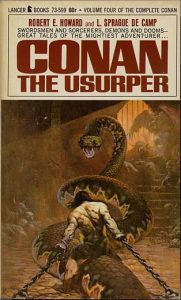 Ninety years after the first publication of “The Phoenix on the Sword,” Robert E. Howard’s sword-and-sorcery stories continue to resonate through popular culture. They have inspired motion pictures, comic books, television and animated series, action figures, role-playing and video games, and even heavy metal music and a live-action show at Universal Studios Hollywood. Most importantly, his fiction has inspired other writers to spin their own sword-and-sorcery stories. Lin Carter, Glen Cook, John Jakes, Henry Kuttner, Fritz Leiber, Michael Moorcock, C. L. Moore, Charles Saunders, Karl Edward Wagner, and many others have all contributed to the genre that Howard popularized.
Ninety years after the first publication of “The Phoenix on the Sword,” Robert E. Howard’s sword-and-sorcery stories continue to resonate through popular culture. They have inspired motion pictures, comic books, television and animated series, action figures, role-playing and video games, and even heavy metal music and a live-action show at Universal Studios Hollywood. Most importantly, his fiction has inspired other writers to spin their own sword-and-sorcery stories. Lin Carter, Glen Cook, John Jakes, Henry Kuttner, Fritz Leiber, Michael Moorcock, C. L. Moore, Charles Saunders, Karl Edward Wagner, and many others have all contributed to the genre that Howard popularized.
Not long after Robert E. Howard’s death in 1936, his friend and correspondent H. P. Lovecraft wrote:
It is hard to describe precisely what made Mr. Howard’s stories stand out so sharply; but the real secret is that he himself is in every one of them.
We look forward to seeing you next year at PulpFest 2023 and our celebration of the 90th anniversary of Conan the Cimmerian and the other great heroes of the pulps. We’ll have presentations on “Swords and Sorcery in ‘The Unique Magazine’,” “Illustrating Conan for the Commercial Market,” “Conan the Multimedia Barbarian,” and much more at next summer’s pulp convention.
PulpFest 2023 is scheduled for August 3 – 6, at the DoubleTree by Hilton Hotel Pittsburgh – Cranberry in Mars, Pennsylvania. Click the registration button below our home page banner to join PulpFest 2023!
For more on Robert E. Howard and Conan, please visit our YouTube Channel to view “90 Years of the Great Pulp Heroes #6” — Conan — created by PulpFest‘s Craig McDonald.
Robert E. Howard’s “Spear and Fang” appeared in Weird Tales for July 1925, with cover by Andrew Brosnatch. Nineteen years old when it was published, it was the celebrated author’s first professional sale.
Although Robert E. Howard’s work — particularly his Conan stories — had been collected in small press editions over the years, the Lancer and Ace paperback editions of 1966 – 1977 delivered the character to the masses. Lancer’s Conan the Usurper — initially released in 1967 — was originally the fourth volume in the series. The volume features Howard’s “The Phoenix on the Sword” and “The Scarlet Citadel,” as well as two Howard works that were rewritten or completed by L. Sprague de Camp.
Undoubtedly, it was Frank Frazetta’s stunning cover artwork for the Lancer Books editions that initially sold the character to the readers of the late twentieth century. However, it was Howard’s inspired and expressive writing that kept them clamoring for more.

